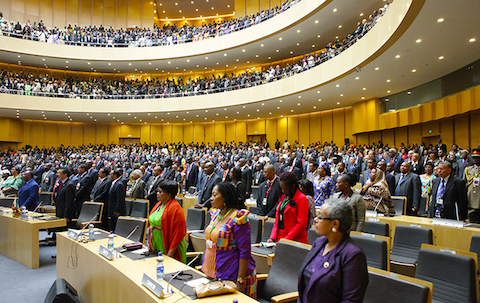Introduction
A secure and thriving society is built on a foundation of peace and security. They are essential to the development of nations, cities, and individuals. Maintaining global stability is more important than ever as our global community becomes more depending on one another. All parties involved, from national governments to non-governmental organisations to members of the general public, must work together to achieve this goal. The importance of peace and security will be discussed, along with tactics and actions that can help bring about a more peaceful and safe world.
The Importance of Peace and Security
Fostering sustainable growth, safeguarding human rights, and promoting social harmony all require an environment of peace and security. They foster a setting in which citizens are safe to go about their daily lives and make meaningful contributions to the development of their communities. Freedom of speech, access to quality healthcare, and economic opportunity all flourish in stable communities. In addition, a more just and equal society is guaranteed when problems are resolved peacefully via communication and negotiation instead of turning to violence.
Challenges to Peace and Security
Despite people everywhere wanting peace and stability, many obstacles remain. War, terrorist attacks, organised crime, and tensions between nations all pose serious challenges to world stability. societal inequality, poverty, and marginalisation can all contribute to the growth of discontent and unrest, which can have a negative effect on societal stability. New cyber threats and rapidly developing technologies have expanded the scope of security concerns and call for novel solutions.
Strategies for Ensuring Peace and Security
Strengthening International Cooperation
Global concerns like peace and security necessitate coordinated efforts from all over the world. Governments and international organisations need to coordinate their efforts to reduce the likelihood of war and help settle existing conflicts amicably. Promoting communication and diplomatic efforts can improve mutual understanding and trust between countries.
Promoting Sustainable Development
For sustainable peace to be achieved, it is essential that issues like poverty, inequality, and lack of access to fundamental services be addressed. Societies may provide opportunities, minimise grievances, and encourage social cohesion through investing in education, healthcare, infrastructure, and sustainable economic development.
Protecting Human Rights
Peace and safety can only be achieved through the protection and advancement of human rights. When people’s fundamental rights are protected, everyone benefits. This is especially true of the rights to free speech, equality, and justice.
Strengthening Institutions
The maintenance of peace and security depends on the development of strong institutions that advertise responsible leadership, openness, and accountability. Maintaining peace and reducing crime requires strong law enforcement, an independent judiciary, and accountable leadership.
Engaging Civil Society and Communities
Promoting peace and security requires the participation of civil society organisations, community leaders, and grassroots movements. Strengthening social resilience requires empowering local communities, encouraging dialogue, and ensuring the participation of underrepresented groups.
Investing in Conflict Prevention and Resolution
Preventing conflicts from increasing requires giving early warning systems, conflict prevention measures, and mediation attempts high priority. Long-term peace can benefit from efforts to improve diplomatic capacities and support peacebuilding activities.
Exploring the Role of Education in Peace and Security
When it comes to spreading the message of peace and security, education is crucial. Cultures of peace, tolerance, and understanding can flourish when all members of a society have access to a high-quality education. Peaceful dispute resolution, challenging discrimination, and constructing inclusive societies all require the knowledge, skills, and values that are fostered via education. Empathy, critical thinking, and tolerance for differences are all fostered, all of which contribute to ending the cycle of violence.
Students can learn about conflict resolution, human rights, and global citizenship if peace education is incorporated into the classroom. It equips people to do their part in making the world a better place. Moreover, schools can play an important role in fostering peaceful coexistence by providing a neutral ground for the development of communication, mutual respect, and cooperation among members of different groups.
Empowering Women and Youth
Sustainable peace and security cannot be achieved without first promoting gender equality and empowering women. Although they are frequently the ones to take the hit in conflicts, women may also be powerful agents of positive change and peacemaking. More equitable and sustainable outcomes can be achieved when women are included in decision-making, peace negotiations, and post-conflict reconstruction activities. Resilient communities benefit from investments in women’s education, economic independence, and access to justice.
The same holds true for peace and security: involving and empowering young people is essential for the future. The youthful population holds untapped resources for peacemaking and social harmony that can be put to good use. By investing in their futures via education, training, and civic participation, you help children grow into productive members of peaceful communities. Fostering empathy, bridging barriers, and promoting understanding among disparate groups are all possible outcomes of youth-led activities including community discussions, art projects, and volunteerism.
Addressing Root Causes of Conflicts
Resolving conflicts at their origins is essential for maintaining peace and stability in the long term. Resentment and instability can be fueled by socioeconomic disparities, political grievances, discrimination, and marginalisation. Inclusive policies that foster social fairness, economic opportunity, and equal access to resources must be a top priority for governments and stakeholders. The likelihood of conflicts is diminished when poverty is reduced, social cohesion is fostered, and past wrongs are righted.
In addition, preserving stability and safety calls on resolving environmental issues like climate change and resource depletion. Tensions and instability can be exacerbated by climate-related conflicts, competition for natural resources, and forced migration. These dangers can be reduced, and peaceful coexistence encouraged, by the adoption of sustainable development practises, the promotion of environmental stewardship, and the investment in climate resilience.
Harnessing Technology for Peace and Security
Peace and security in the modern digital age present both opportunities and challenges. It might significantly improve early warning systems, make conflict resolution easier, and fundamentally alter how peace is built. The downside is that it opens the door to new dangers like cyber attacks, fake news, and the weaponization of technology. Therefore, peace and security can only be preserved if technology is used in a responsible and ethical manner.
The power of ICTs to foster harmony has the potential to be game-changing. For instance, social media has evolved into a potent instrument for peace advocacy, community mobilisation, and education about human rights breaches. They help people communicate with one another, encourage open discussion, and give a platform to those who might otherwise be overlooked. Organisations and governments can use technology to spread truthful information, combat misinformation, and include individuals in peacemaking processes.
Data analytics and artificial intelligence (AI) improvements can also help with conflict avoidance and resolution. Conflict hotspots can be located and mitigated at an early stage with the use of pattern and trend analysis. It is possible to monitor and analyse social media content for incitement to violence or hate speech with the help of AI-powered solutions. Furthermore, immersive experiences provided by technology like VR and AR can help to promote communication and understanding across cultural boundaries.
Promoting a Culture of Peace
Maintaining peace and security over the long term requires more than just changes in policy and technology developments. Educating people and communities to be tolerant, respectful, empathetic, and nonviolent is essential. The significance of education in the development of certain character traits is crucial.
Schools should make peace education a central part of their curricula, instructing students of all ages on the value of nonviolent conflict resolution, appreciation of cultural differences, and advocacy for human rights. Peaceful communities are fostered in large part by teachers and educators who model these ideals and lead their students to greater understanding and compassion.
Conclusion
Peace and security can only be maintained by a comprehensive strategy that incorporates scientific progress, educational opportunities, and a shared commitment to nonviolence. To ensure safety in the digital age, it is essential to harness technology in a responsible manner, to use it to effect positive change, and to address the hazards associated with doing so. Strengthening societies requires a focus on education, empowerment of individuals, and communication and mutual understanding. Adopting these methods and cooperating as a group, we can make this planet a place where everyone can live without fear of violence or persecution.











